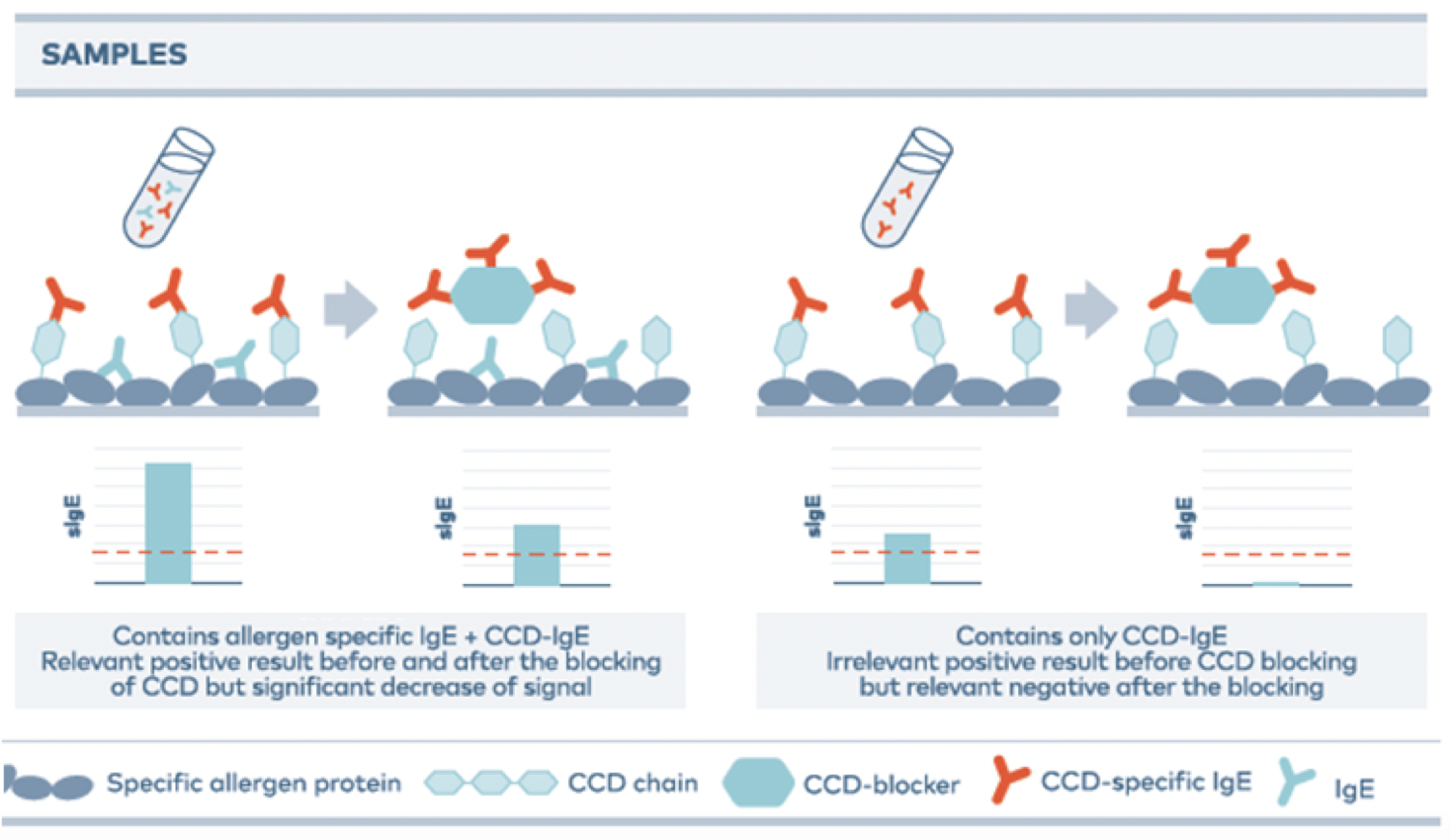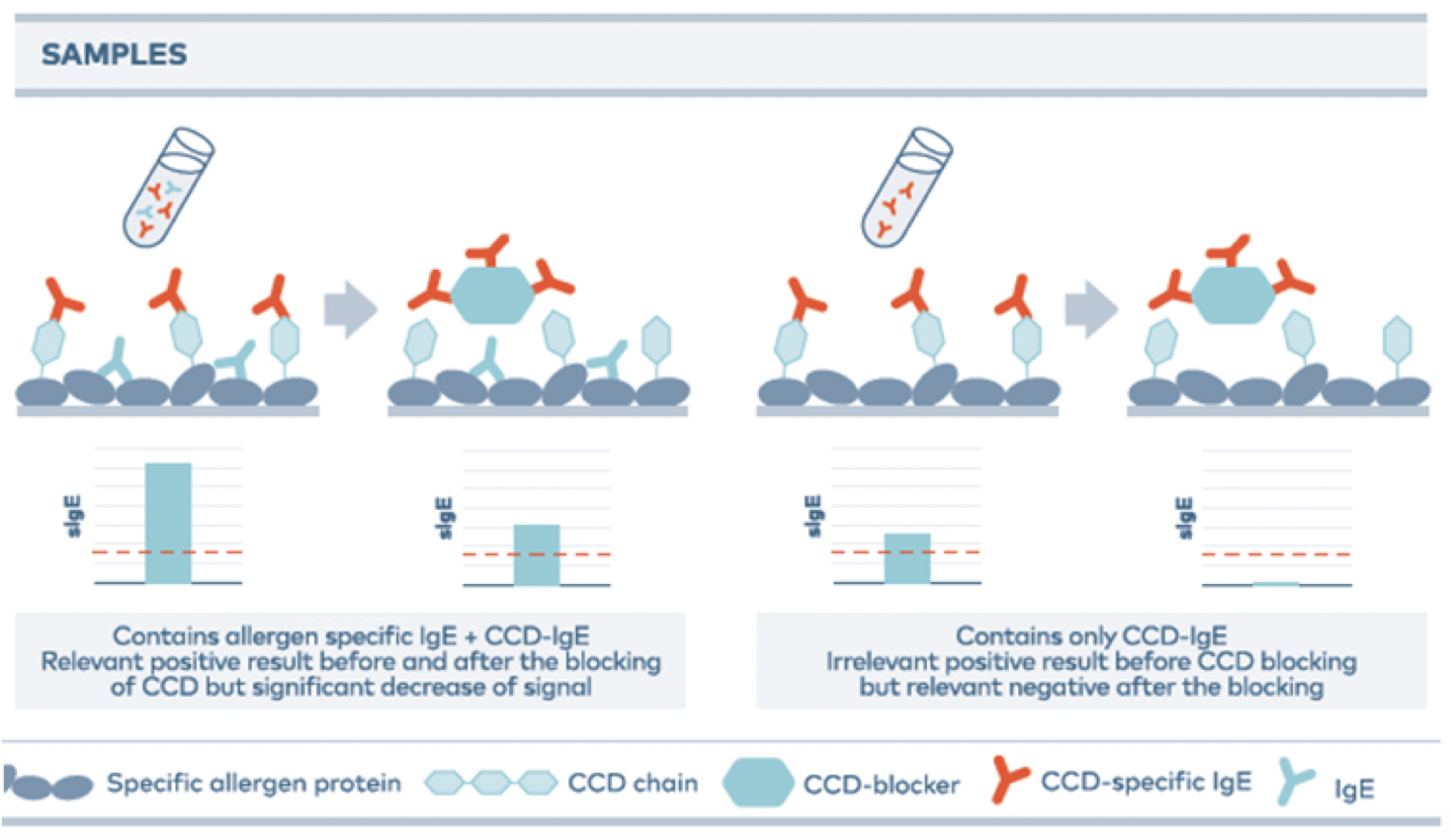What are CCDs?
Carbohydrate Cross-Reactive Determinants (CCDs) are protein-linked carbohydrate structures responsible for a part of the cross-reactivity phenomenon.
Specific IgE (sIgE) have been detected in dogs and cats versus several proteins enriched in CCDs as Bromelain and Peroxidase. About 30% of samples haves IgE vs CCDs. CCD-detection is inhibited by commercial CCD-blockers composed by CCDs from Bromelain in vitro coupled to Human Serum Albumin (HSA).

How does CCD blocking work?
Experiments in Europe show that CCDs (BRL, HRP and/or CCD blocker) used as inhibitor affects specifically those allergens which contain them however other allergens, i.e. mites, are not affected by CCD-blocking. Our CCD-blocking method is 100% specific for allergens containing CCDs.
Spectrum’s internal studies have validated that applying the CCD blocker to our plates reduced IgE interference by an additional 10%. This means patients will get treatment sets with more relevant allergens. Testing, however, is only the first element of resolving an allergy patient’s symptoms.

In conclusion...
Atopic dermatitis is a complex, multifactorial disease. Allergen immunotherapy (AIT; ie, hyposensitization) is considered to be the only treatment that can impact the course of disease. The gold standard for identifying allergens for immunotherapy has traditionally been intradermal testing (IDT); however, there is no clear evidence that AIT based on IDT results is more effective than AIT based on immunoglobulin E (IgE) serum allergy testing, and not all pet owners have access to IDT.1,2,3
Choosing Spectrum Veterinary’s SPOT Platinum+ panel, adds an additional layer of quality control features you can't get anywhere else in the U.S. Ensure more reproducible results and improve AIT recommendations, by committing to using the Platinum+ panel whenever allergy cases present themselves.
References
- Olivry T, DeBoer DJ, Favrot C, et al. Treatment of canine atopic dermatitis: 2015 updated guidelines from the International Committee on Allergic Diseases of Animals (ICADA). BMC Vet Res. 2015;11:210.
- Olivry T, DeBoer DG, Favrot C, et al. Treatment of canine atopic dermatitis: 2010 clinical practice guidelines from the International Task Force on Canine Atopic Dermatitis. Vet Dermatol. 2010;21(3):233-248.
- Mueller RS, Burrows A, Tsohalis J. Comparison of intradermal testing and serum testing for allergen-specific IgE using monoclonal IgE antibodies in 84 atopic dogs. Aust Vet J. 1999;77(5):290-294.


